How do I know I need a new hip?
Patients usually know they need something done to evaluate a serious pain in the groin that restricts movement. Most often they have trouble getting out of their car, can’t reach the laces on their shoe, or hurt in the groin when getting out of a chair. Family members may notice a slight limp. A simple X-ray of the hips can confirm the diagnosis. Special tests like MRIs are typically not necessary.
How long will my new hip last?
The results of modern cementless hip replacement are extraordinarily good (98% short term success, and over 90% still working at 20 years!). Many will last the full lifetime of the recipient, depending on the age of the patient. Others, particularly in very young and active people, will have some wear or loosening in time that will require revision surgery. We are recommending total hip replacement in younger patients now because the results have been very good.
Will I need rehab after total hip replacement?
Maybe. Many of my patients just do home exercises and the hip comes along very nicely. Unlike a total knee, which requires more work to obtain motion, the hips do great on their own with simple home exercises. Of course, we can arrange physical therapy for those patients who want it. In fact, we have a wonderful rehab facility in our office, which is a great advantage because we can keep an eye on your progress.
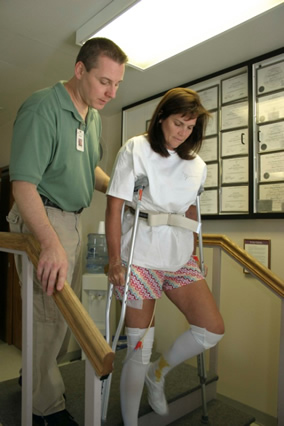
What activities can I do after a Hip Replacement?
How fast can I get going?
Recently, we have been offering little in the way of restrictions, particularly after an anterior hip replacement. Common sense still rules the day. If you are 40 years old and would like your hip to last as long as possible, then jogging just doesn’t make sense. On the other hand, tennis, golf, skiing, bike riding, swimming, and yoga are just fine. Golf at three weeks is often OK. You can drive your car immediately if it is your left hip! Common sense says wait a week to make sure you are a safe driver after anterior total hip replacement of the right hip.
Is Anterior Hip Replacement better than the old way?
Anterior total hip replacement is a remarkable procedure that does not cut any muscles during the placement of the hip implants. It results in a faster recovery, with less pain and less restrictions after surgery. Two years ago I was doing 99% posterior approaches. Now I am doing 90% anterior approaches for primary total hip replacements. I think it is better for most routine hip arthritis patients, but there are other surgeons that prefer posterior and other approaches.
Is everyone a candidate for the new Anterior Hip Replacement Surgery?
No. Most average sized people are candidates. The anterior approach becomes progressively more difficult to do in large or overweight people, especially men with large thigh muscles. Also, some patients with post-traumatic deformities, or congenital defects are better treated by the posterior approach, which allows better vision by virtue of releasing some tight muscle tissue.
Do you do the Anterior Total Hip Surgery at Scottsdale Healthcare hospitals?
Yes! I am the Medical Director of the Joint Replacement center at SHC Osborn. We have two of the special Anterior Hip Tables, and I am scheduling anterior total hip replacements each week. Patients less than 65 years old routinely go home the next morning!
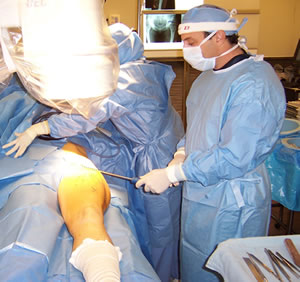
What are some possible complications of Anterior Total Hip Replacement?
Most of the possible complications are the same as with any hip replacement procedure. They include, in my experience, less than a .5% infection rate, a 1% deep venous thrombosis rate (clot in the leg vein), less than a .5% fracture rate, about a 5% chance of a noticeable leg length difference, and less than a 1% dislocation rate. All patients have some risk of anesthetic related complications that are unusual, but possible, and this includes the possibility stroke, heart attack, pulmonary embolism or death. Some patients get a numb area on the thing after the incision, but it usually is temporary. Implant malposition or loosening can occur, and in those patients a second procedure may be necessary to correct the problem.
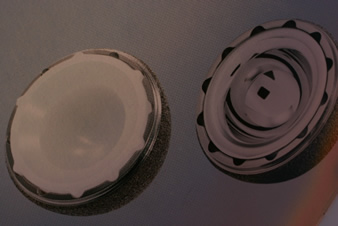
What materials are used for the hip implants?
Most femoral stems are medical grade titanium, which is well tolerated by humans. The bearing metal surfaces are made of cobalt-chrome because it is more resistant to scratching and wear compared to the softer titanium. Until recently, bioengineers thought there was a significant advantage to metal on metal couplings.
However, recent evidence shows some people (up to 5%) can have a negative reaction to the small metal wear particles that are created with time. Ceramic heads are available, but there is increasing concern about the risk of ceramic fractures and a squeaking noise. The advantage of ceramic was thought to be a smoother surface than metal, but with new plastics, it no longer seems to justify the risks of use in most cases. Ceramic would be a good option in the rare case of a patient with a metal allergy, for instance.
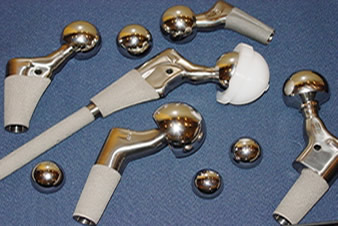
What is the best combination of materials for a hip implant right now?
My solution is to use a new higher quality plastic called hi-density crosslinked polyethylene, usually treated with an anti-oxidant (like Vitamin E) to make it last much longer than older plastics. So, the best combination right now (the one I want in my hip), seems to be metal heads on crosslinked poly liners.
Is Surface Replacement an option?
Not a good one. The results are poor. I do not recommend this procedure for anyone.
What about computer assisted Total Hip Replacement?
Not useful at this time. Operative time is increased and results are not improved. I think it is mis-used as a marketing come-on for people who like all things computerized. It really doesn’t work!
I heard about a Hip Recall. What is that all about?
In short, one particular device, the ASR, that had a large metal head coupled with a large metal cup with no screw holes. It has been more painful in some patients than expected. Call your surgeon if you think you may have received this hip. In my personal experience, 90% of these hips are still working very well. Please see my ASR Hip Implant Recall page for more information about the hip implant recall.
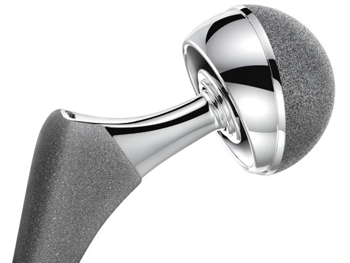
Where can I get more information on Total Hip Replacement?
So many places on the web. Just search Google. Better yet, come in for an appointment to see us! We have books, free classes, and materials from our Total Joint Center that you can have. I can give you names of other satisfied patients to talk to about the THR experience.
Dr. Kozinn’s CV:Stuart C. Kozinn MD. 2015 CV x